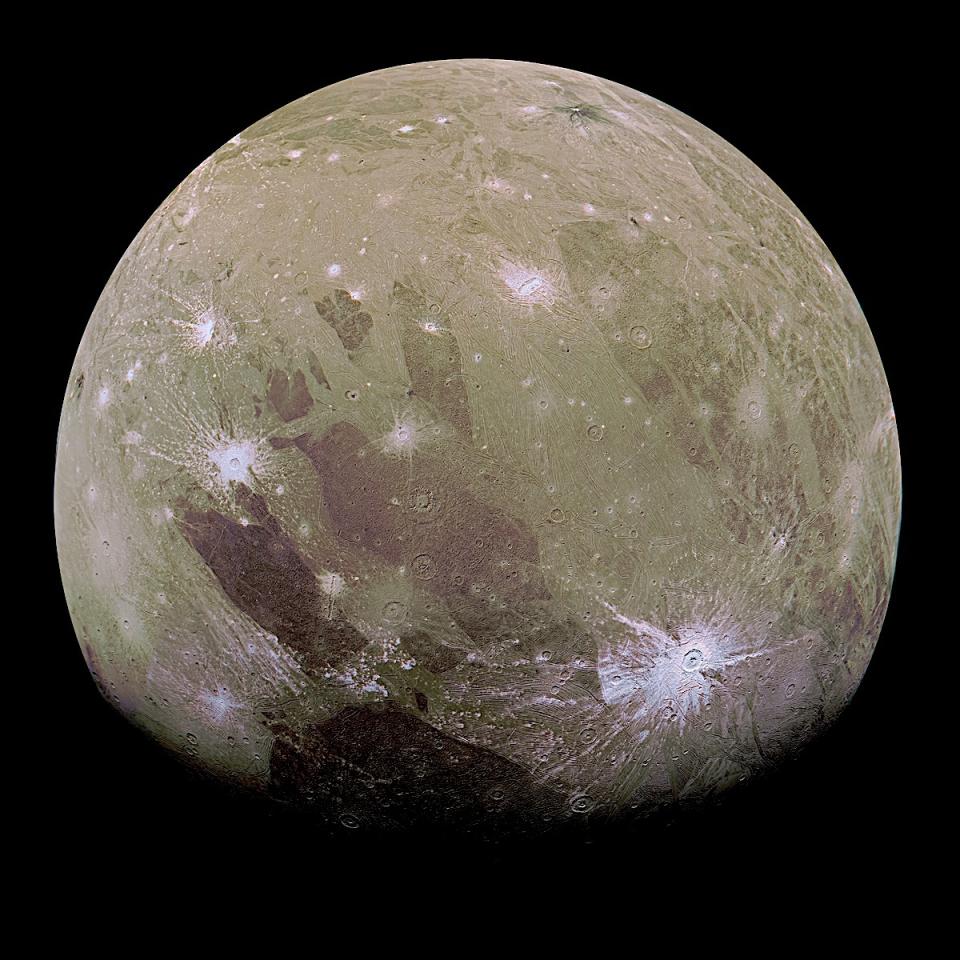
Redacción Ciencia, Feb. 20 (EFE). – a new form of ice based on water and sodium chloride (table salt), created in the laboratory at low temperatures and high pressure, It could be the one in the red lines that cross the surface of Europa, one of Jupiter’s moons.
A study published today by Pnas coordinated by the University of Washington describes this new type of ice that the team estimates could form on the surface and bottom of the deep oceans of some icy moons.
Europa’s surface is dotted with red streaks that scientists believe are a frozen mixture of water ands, but its chemical signature is ambiguous because it does not match any known substance on Earth.
Salt and water are “known very well in terrestrial conditions, but then, we’re completely in the dark and now we have these planetary bodies that probably have compounds that are very familiar to us, but in very strange conditions,” says Baptiste Journeau of the University of Washington.
The researcher notes that the discovery of new types of salt ice is important not only for planetary science, but also for physical chemistry and even energy research, which uses hydrates to store energy.
At lower temperatures, water and salts combine to form a solid framework of salty ice, known as a hydrate, which is held in place by hydrogen bonding. The only sodium chloride hydrate known so far was of a simple structure containing one molecule of salt for every two molecules of water.
The university notes that the two new hydrates, present at moderate pressures and low temperatures, are strikingly different.
One contains two NaCl for every 17 water molecules; The other contains one sodium chloride for every 13 water molecules. The researcher adds that this would explain why the signatures on the surface of Jupiter’s moons are more “hydro” than expected.
coincidence
The team was trying to measure how adding salt changes the amount of ice that can be obtained because this mineral acts as an antifreeze, but when they put it under pressure, they saw crystals start to grow in ways they didn’t expect. “It was a very serendipitous discovery.”According to Giorno.
The experiment consisted of squeezing some salt water between two diamonds the size of a grain of sand, squeezing the liquid up to 25,000 times standard atmospheric pressure.
Cold conditions and high pressure created in the lab would be common on Jupiter’s moons, where scientists believe 5 to 10 kilometers of ice would cover oceans several hundred kilometers thick, with the possibility of denser ice forms in the background.
“Pressure brings molecules closer together, so their interaction changes, and that is the main driver of the diversity of crystal structures that we found.”Journaux explains. This form of ice remains stable at standard pressure down to about minus 50 degrees, so if there’s a hypersaline lake, say in Antarctica, that can experience those temperatures, this newly discovered hydrate could be there, as he says.
The team hopes to make or collect a larger sample that will allow for further analysis and to verify whether the signatures of the icy moons match those of the newly discovered hydrates.
The icy moons of Jupiter are the next target of two space missions: Jussi, of the European Space Agency (ESA) will launch in April to study the planet and three of its satellites, Ganymede, Callisto and Europa, which may have oceans hiding beneath its surface. Next year, NASA’s Clipper will be heading to Europe.
(c) EFE Agency
You may also be interested in | on video
A Mexican engineer has been realizing the American dream at NASA for 20 years

“Proud web fanatic. Subtly charming twitter geek. Reader. Internet trailblazer. Music buff.”

:quality(85)/cloudfront-us-east-1.images.arcpublishing.com/infobae/TEQF6EONZRFGLLLDIDD4L2O4EE.jpg)

:quality(75)/cloudfront-us-east-1.images.arcpublishing.com/elcomercio/XU32LRAEZFDDPNVHLFU3CKVBYY.jpg)



More Stories
How to create 3D videos with my iPhone, it will be very useful even for your business
NASA discovers an anomaly in the Earth’s magnetic field that could have serious consequences for humans
Can the Earth be divided into two parts?